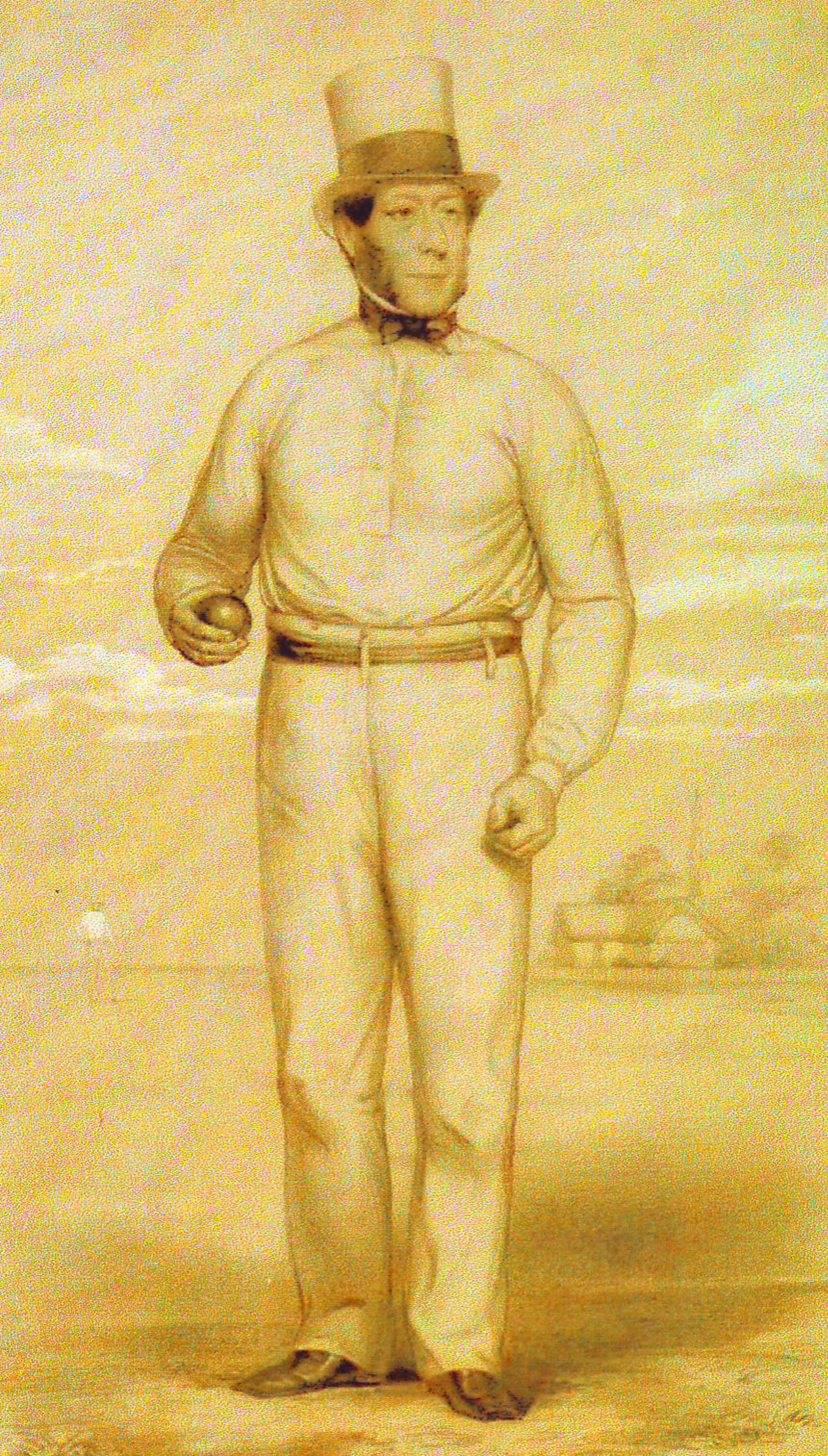The Father of Trent Bridge
William Clarke, the Father of Trent Bridge, and the present stand on the ground, named after him, could both qualify for the adjective ‘awkward’.
They do not have much else in common...the principal reason for naming the stand (built in 1990) after William Clarke was its proximity to the Trent Bridge Inn. However the inn to which William moved during the winter of 1837-38, having married the landlady, was demolished in 1885! Clarke himself lived there less than ten years before moving off to London and greater fame in 1846.
Clarke effectively took control of Nottingham cricket in 1831 and made his pub, the Bell Inn in the Market Square, cricket’s Nottingham headquarters, presumably boosting trade as a consequence. His move to the Trent Bridge Inn, then little more than a ramshackle cottage, enabled him to turn the adjacent meadow into Nottingham’s first pay-to-enter cricket stadium. However he miscalculated the demeanor of his fellow townsfolk who failed to appreciate the idea of paying to watch cricket, since they had hitherto viewed matches free of charge on The Forest.
So Clarke abandoned this loss-making venture and went to London where he signed up the best England cricketers of the time and created his privately-run All England Eleven. With no rival team games to worry him – football, tennis, hockey and the rest were still to be organised – the population of the British Isles were attracted in their thousands to watch Clarke’s team of stars. Within a few years he had a full list of three day matches from early May to late September and the pounds and pennies rolled in.
For six years he had a monopoly, but then several of his star players became disillusioned by Clarke’s meanness and dictatorial ways. They broke away, setting up a rival team called United All England. Public demand was such that both teams still had more than enough fixtures. Clarke, still playing cricket for All England, took a wicket with the last ball he bowled in June 1856, aged 57. He died a few weeks later.
It is said that most of the considerable fortune he made out of cricket, he gambled away and, while this may be no more than rumour, his children do not seem have inherited very much.
Over the decades,Trent Bridge has been completely rebuilt, save for the pavilion. The William Clarke Stand was the second phase of the rebuilding – the Larwood & Voce stand and Tavern being the first. The Clarke stand (itself now a candidate for replacement) replaced the last vestiges of the Victorian covered stands which encircled two thirds of the playing area. The other third comprised the football stands used for Notts County matches.
The original plans for the stand showed a double-decker, but with money short, only the lower storey was built plus the new press box, to which the journalists took an instant dislike. The lower storey did increase the seating capacity of the ground by 500. The new building encroached a little on the grassed area and more on the TBI parking area. In doing so it did provide space for a club shop, as well as extra toilets and an office (now another bar).
The building of the new Radcliffe Road stand in 1998, which took in several yards of the playing area, made the last two bays of the Clarke stand effectively unusable and made the stand itself incongruous. Perhaps another adjective that might describe the Father of Nottingham Cricket himself!
December 2020
Nottinghamshire First-Class Number: 3
See William Clarke's career stats here
